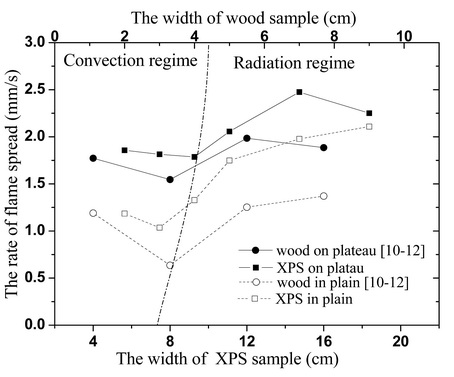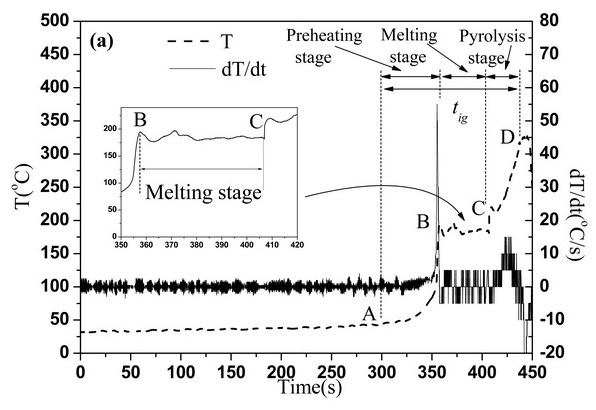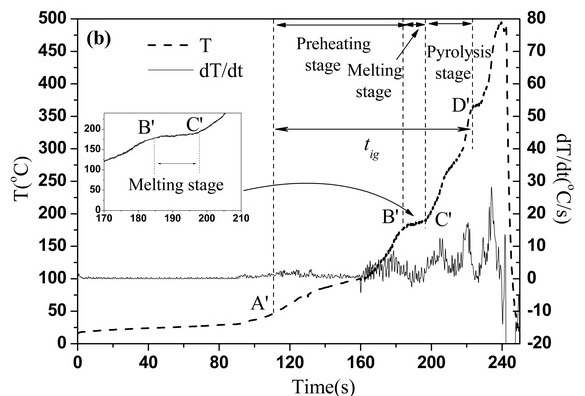Flame spread over solid combustible surfaces is a very common combustion behavior in fires, which is also a fundamental research topic in fire science. Recently, many thermoplastic materials with good thermal insulation performance were used in buildings. These thermal insulation materials have high flammability, and once ignited, flame spreads very fast over them, which would bring many deaths and large amounts of economic loss. Therefore, it is necessary to understand the fire development and to develop fundamental theories for flame spread over solid combustible surface, so that the flame characteristics can be understood and effective fire prevention and control measures can be taken.
Recently, the Industry Fire Division at SKLFS, USTC, built up an advanced experimental system, the multi-functional flame spread experimental system, which was supported by the projects of 973, 985, key and general projects of the National Natural Science Foundation of China. The Industry Fire Division carried out a series of fundamental experiments on the characteristics of flame spread over the charring and thermoplastic solid surface in the Tibetan plateau and in the Hefei plain, and studied the coupling effects of the ambient pressure, oxygen concentration, radiation intensity, sample size and orientation on flame spread. Part of the results has been published on high-quality journals, such as Journalof Hazardous Materials, Fire Safety Journal, Journal of Fire Sciences, Journal of Thermoplastic Composite Materials, Chinese Science Bulletin, and so on.
The effects of width on flame spread over the charring material (wood) and the thermoplastic material (XPS) were found to be the same: the rate of flame spread drops firstly and then rises with increasing sample width. (see Figure 1). The theoretical analysis on heat transfer progress shows that the width effects on flame spread are controlled by two different heat transfer regimes, the convection regime and the radiation regime. In the convection regime, flame spread rate decreases with the increasing sample width, while increases with sample width in the radiation regime.
The lower ambient pressure and lower oxygen concentration in the Tibetan plateau obviously change the combustion characteristics of flame spreading over solid surface. Researchers measured the flame temperature on plateau and in plain for flame spreading progress under different conditions. The static analysis on the large amount of data shows that the flame temperature on plateau is little higher than that in plain. Moreover, the temperature profiles in the solid phase of flame spread over XPS surface were studied on plateau and in plain. Results shows that the plateau condition obviously increases the durations of the melting stage and the pyrolysis stage (see Figure 2), and thus decreases the rate of flame spread.

|
Figure 1 width effects on flame spread over solid surface (from Chinese Science Bulletin, 2011) |

(a) |

(b) |
Figure 2 Comparison of temperature profiles in solid phase for: (a) on plateau and (b) in plain. (from Journal of Hazardous Materials, 2011) |


